Shopify vs BigCommerce
We compare Shopify vs BigCommerce to help you decide which website builder is best for running your online store
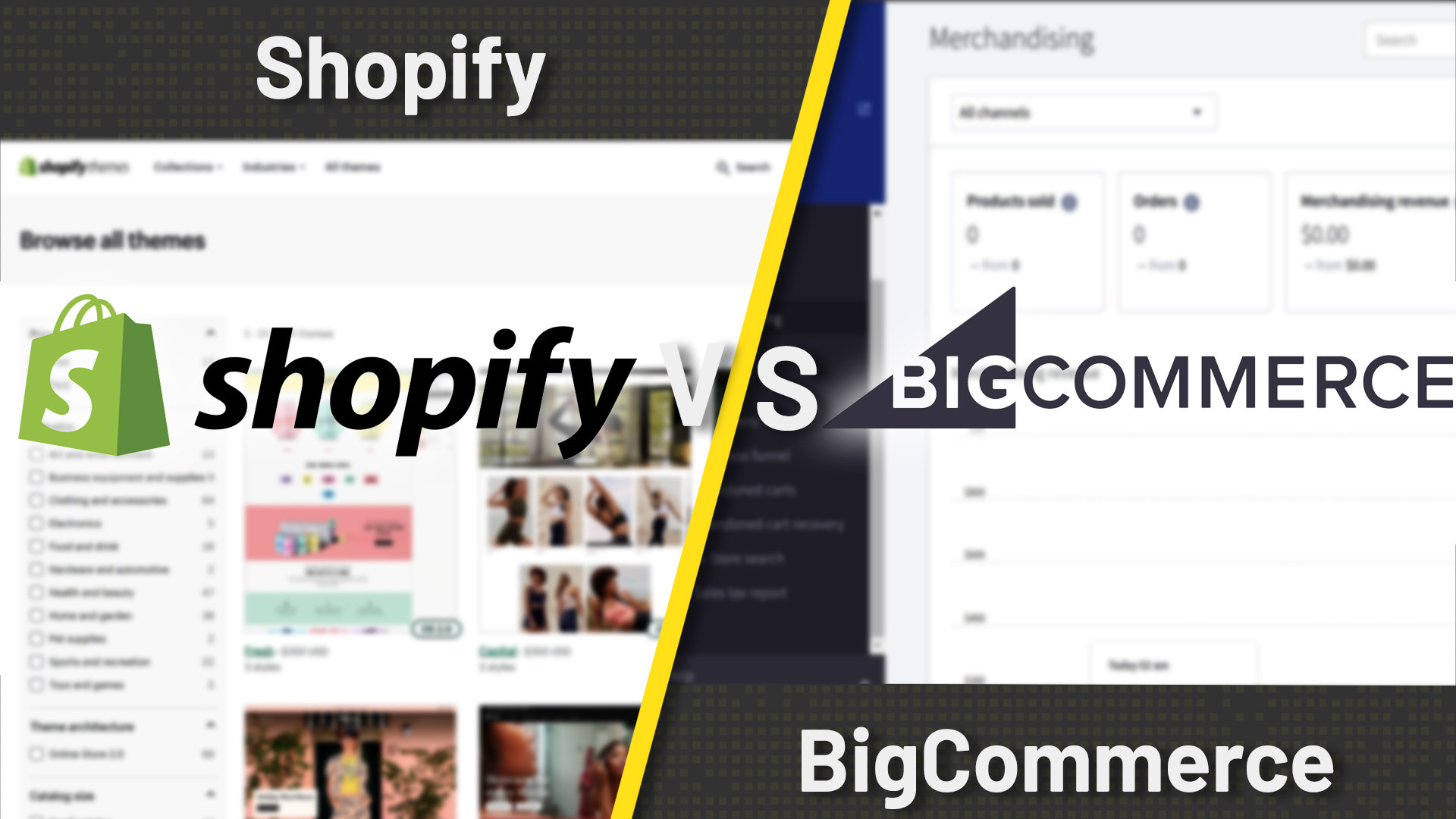

If you want to launch an online store, Shopify and BigCommerce are two of the best website builder platforms for the job. Both platforms offer a wide range of ecommerce tools, including marketing and analytics features to help you scale your business. In this article, we’ll compare Shopify vs BigCommerce to help you decide which ecommerce builder is right for you.
Shopify
Shopify: a market-leading ecommerce builder
With over 1m merchants across 175 different countries using the service, Shopify is ideal for ecommerce sites. In addition to a wide range of third-party apps, its clutter-free interface and built-in shopping cart and checkout manager include additional marketing and security tools.
BigCommerce
BigCommerce: premium online store builder
BigCommerce's drag-and-drop builder is supported with cutting-edge ecommerce tools, such as payment gateway options, app integrations and plug-ins, SEO analytics, and adaptive themes. A simple, clean editor and top-level resources make it a leading option.
Shopify vs BigCommerce: What we compared
We took Shopify and BigCommerce for a spin to compare how easy they are to use, what features they offer for online businesses, and what each platform could do better. Specifically, our guide will cover:
- User interface and setup
- Pricing
- Templates and site design
- Sales channels
- Marketing campaigns
- Sales analytics
- App marketplaces
- Which platform is best for me?
- What our reviewers said
- Alternatives to Shopify and BigCommerce
User interface and setup
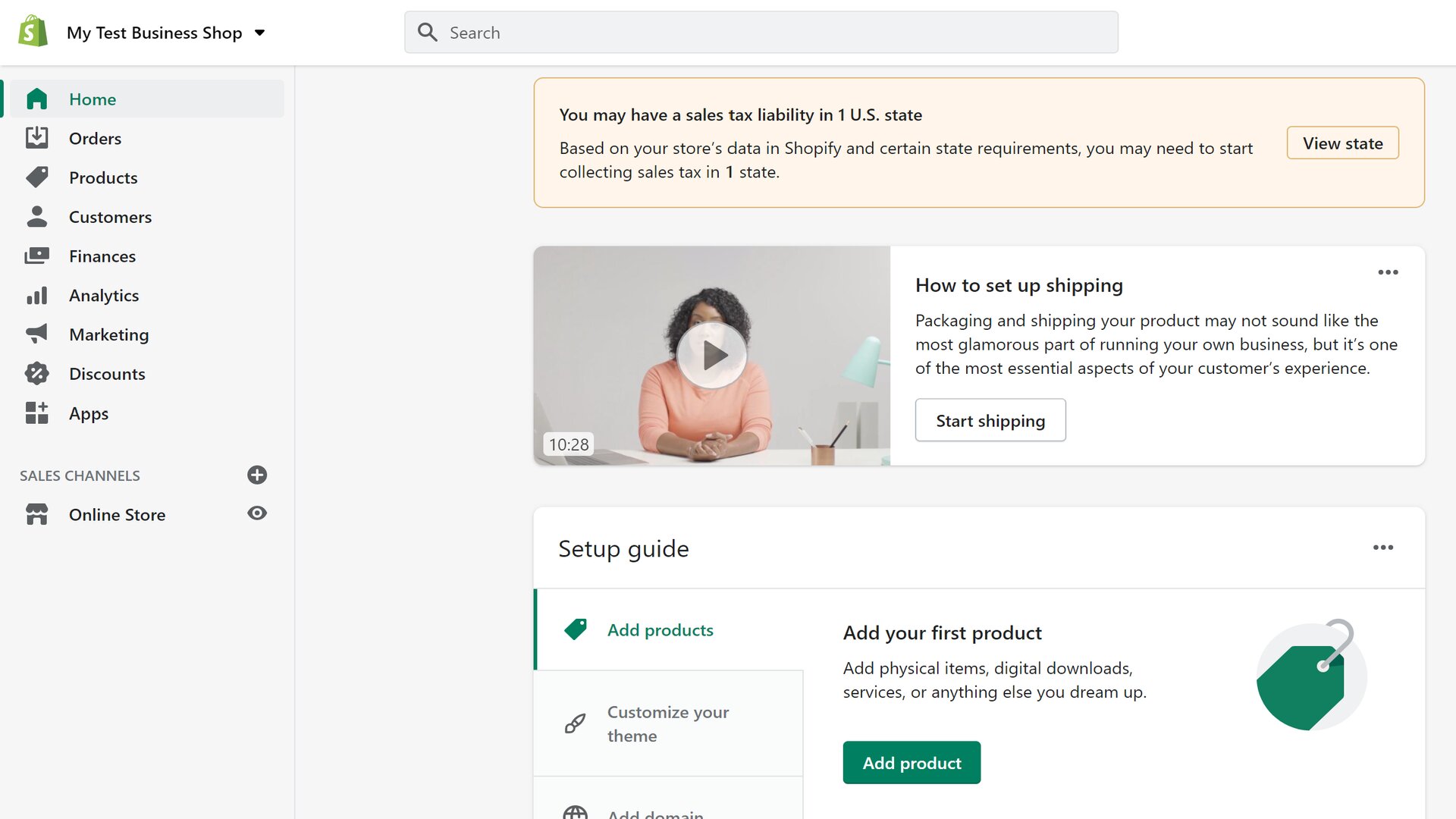
Shopify and BigCommerce are easy to get started with. You don’t have to do any website design if you don’t want to, or even pick a theme at first. Instead, you can jump right into adding products, setting up your shipping and payment preferences, and linking any other sales channels you have.
We found Shopify’s dashboard to be slightly easier to navigate, in part because it’s less crowded with options. However, BigCommerce’s dashboard is pretty straightforward, too, and offers a very similar menu to what you’ll find in Shopify. Both platforms offer setup checklists to help you launch your online store.
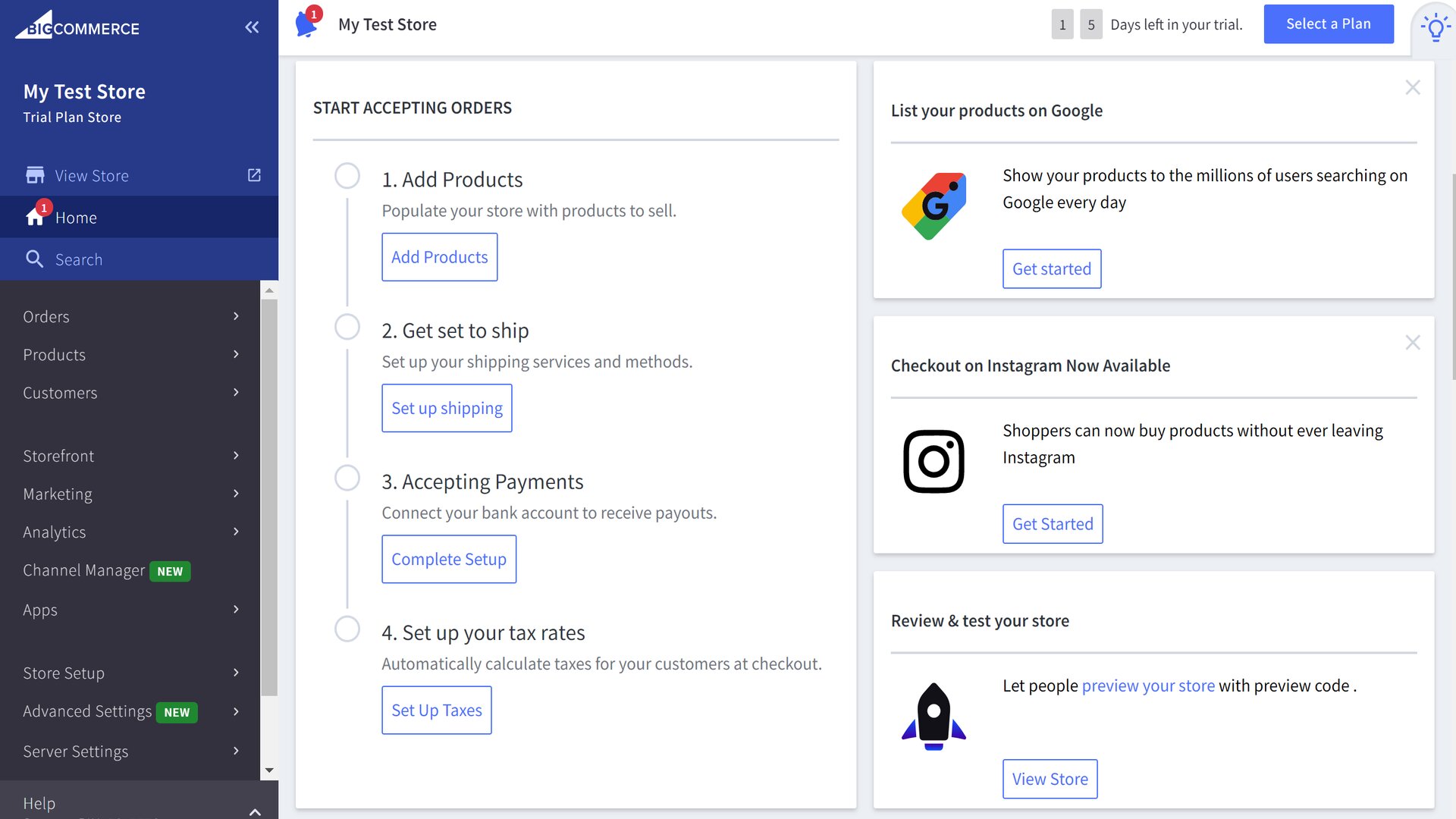
Once your store is up and running, the BigCommerce dashboard effectively serves as an analytics overview. Shopify’s dashboard, on the other hand, offers tips, tutorials, and information about new features once the setup checklist is gone.
Pricing
Shopify and BigCommerce compete closely on price. Both platforms offer three pricing tiers with nearly identical subscription costs, plus enterprise options with pricing by quote only.
There are some important differences in what you get with each platform’s basic and mid-tier plans. For example, BigCommerce offers unlimited staff accounts with all plans, while Shopify limits you to just two staff accounts with a Basic Shopify plan. On the other hand, abandoned cart recovery is included with all Shopify plans, but requires a Plus or Pro plan at BigCommerce.
Another key difference is that Shopify charges an extra transaction fee if you decide to use a payment processor other than Shopify Payments. The fee is 0.5% to 2% of purchases depending on your plan. BigCommerce enables you to use any of more than 55 payment processors, with no additional transaction fees.
Shopify vs BigCommerce: pricing compared
| Header Cell - Column 0 | Shopify | BigCommerce |
|---|---|---|
| Free version? | ✖ | ✖ |
| Starts at | £19 a month (Basic) | £24.55 a month (Standard) |
| Mid-tier plan | £49 a month (Shopify) | £65.53 a month (Plus) |
| Professional level | £259 a month (Advanced) | £245.83 a month (Pro) |
Templates and site design
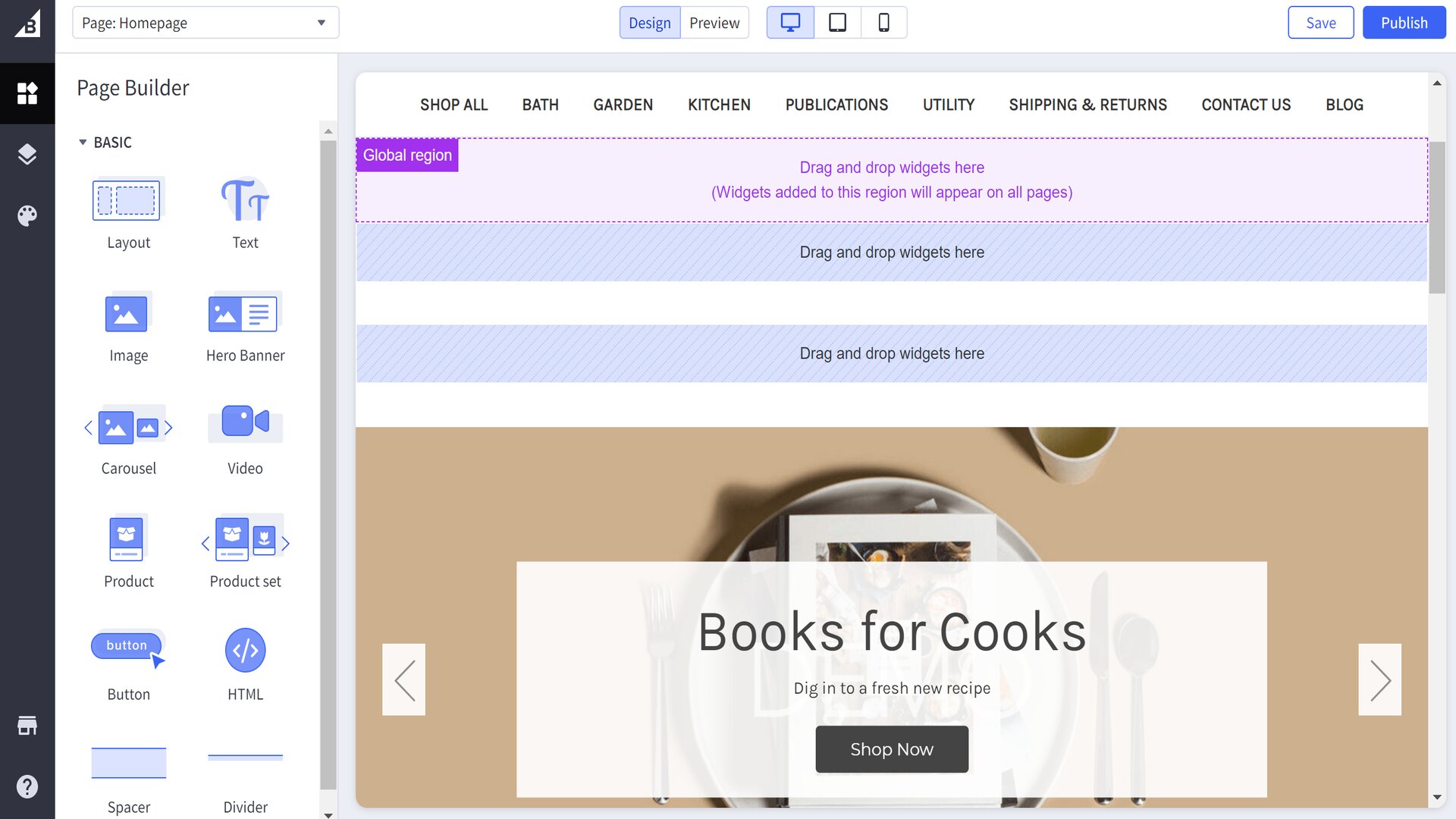
Shopify and BigCommerce both offer templates to help you design your online storefront. At Shopify, there are 10 free templates and more than 90 paid templates. At BigCommerce, there are 12 free templates and more than 170 paid templates.
Neither platform’s website builder is especially adept compared to design-first builders like Squarespace or Wix. However, they offer a reasonable amount of flexibility for customising the look of your store.
In Shopify, the content elements on your site are largely controlled by your template. You can toggle elements on and off, and move sections of your pages up or down, but there’s no way to drag and drop individual content elements around your page.
BigCommerce offers a bit more control, since you can select individual elements such as text boxes, images, and buttons and drag and drop them around your pages. However, some sections of your page are controlled by your template and can’t be modified, only toggled on or off.
Overall, we prefer BigCommerce’s site builder to Shopify’s, but neither platform puts a big emphasis on design.
Sales channels
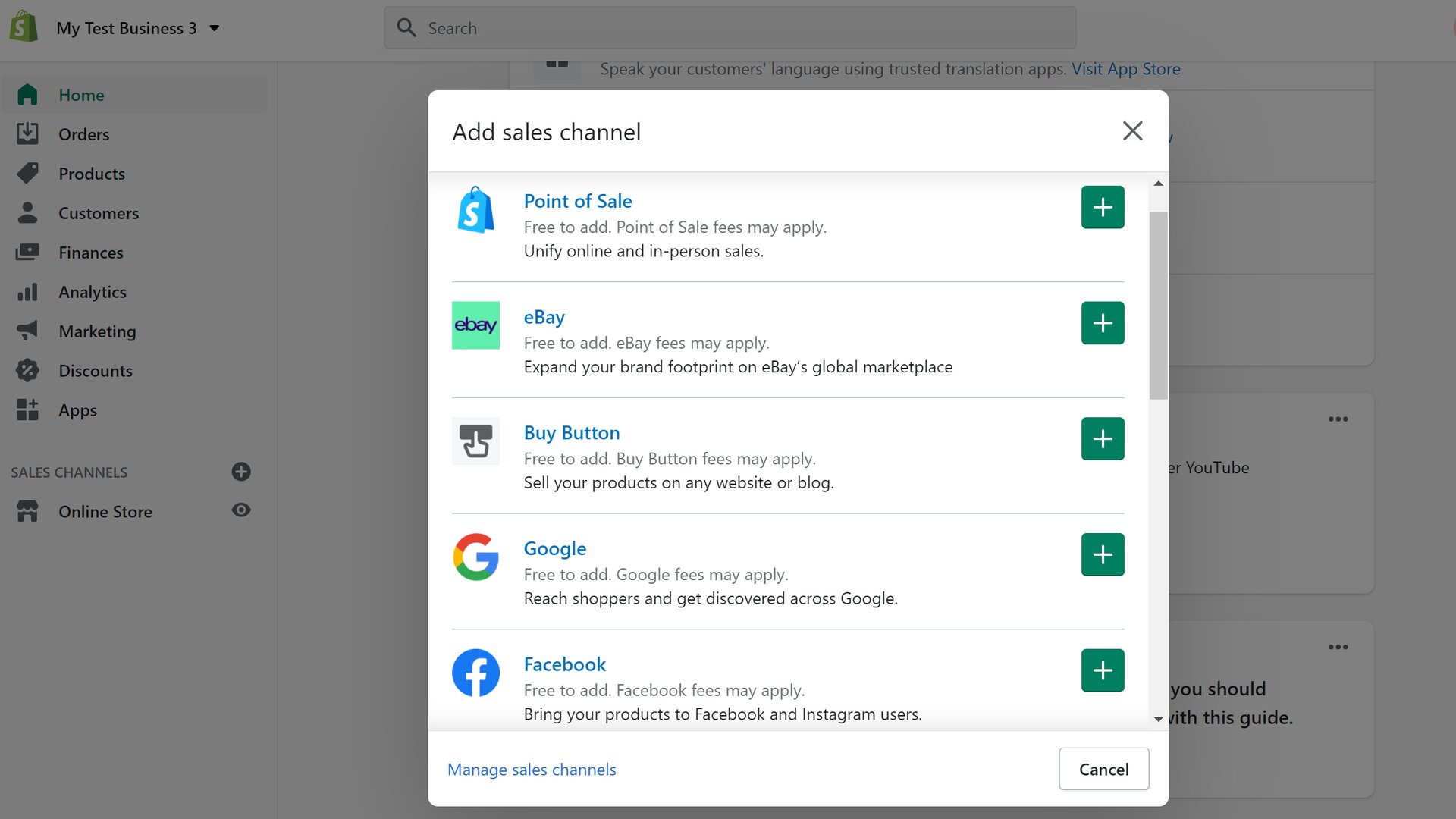
One of the great things about Shopify and BigCommerce is that each platform enables you to add multiple sales channels to your account. Linking your sales channels enables you to manage all of your online sales in one place, simplifying inventory, shipping, and accounting.
On Shopify, you can add accounts from Google Shopping, Facebook, Pinterest, and eBay, as well as integrate your point-of-sale platform if you have one. Shopify also offers more free sales channel integrations through its app marketplace, including for Amazon and Walmart.
On BigCommerce, you can add accounts from Walmart, Facebook, Amazon, eBay, Wish, and Mercado Libre. Clover is currently the only point-of-sale platform supported. Paid apps enable integration with Instagram and Pinterest.
Marketing campaigns
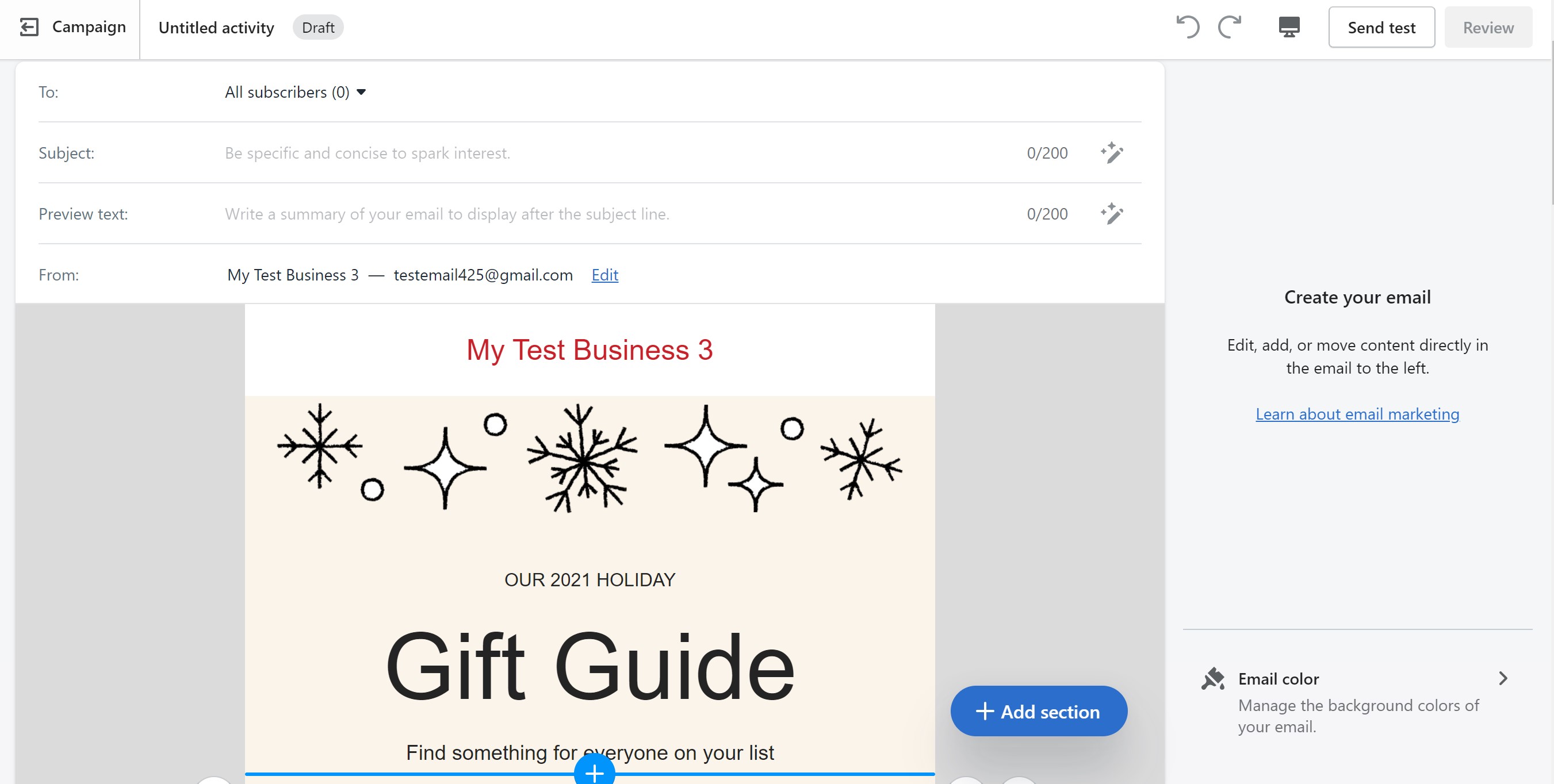
One major difference between Shopify and BigCommerce is in the degree of marketing features the two platforms offer. Shopify has built-in tools for creating email, SMS, and online ad campaigns, whereas BigCommerce does not.
On Shopify, you can create email marketing campaigns using a simple newsletter builder. The builder comes with hundreds of free templates. You won’t find advanced features like A/B testing, custom scheduling, or personalised discount codes, but you can segment your customers into lists for better targeting.
Shopify also enables you to set up SMS text campaigns as well as Facebook, Pinterest, and Snapchat ad campaigns right from your dashboard.
Importantly, BigCommerce does offer automated transactional emails that are sent to customers in response to purchases. You can also find third-party email marketing integrations in both the Shopify and BigCommerce app stores.
Sales analytics
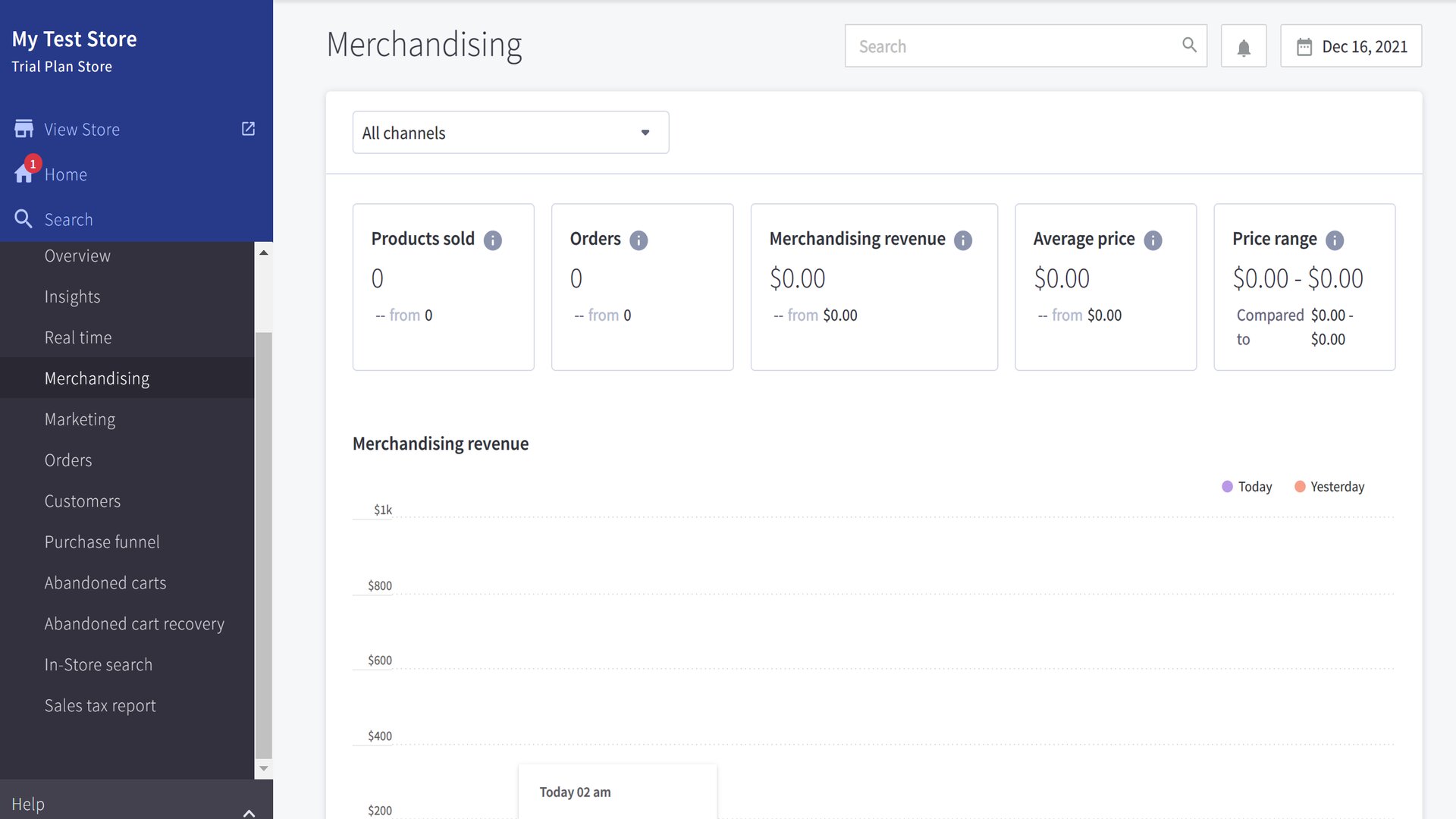
Shopify and BigCommerce each offer impressive analytics dashboards, with a lot of options for digging into your traffic and sales data. Both dashboards are easy to use, and offer excellent data visualisation.
Shopify offers two unique analytics features. First, the platform enables you to track sales that result directly from your marketing efforts. For any email, SMS, or ad campaign, you can see how much revenue the campaign generated and which products were purchased.
Second, Shopify offers custom reports. You can build your own charts and filtered views to get more insights into your top-performing products and biggest customers.
BigCommerce doesn’t have the same flexibility, but some of the pre-made reports are worth noting. For example, BigCommerce offers a merchandising report that enables you to see how your discounts and promotions are generating revenue. There’s also an in-store search report that makes it easy to see what customers are looking for when they explore your shop.
App marketplaces
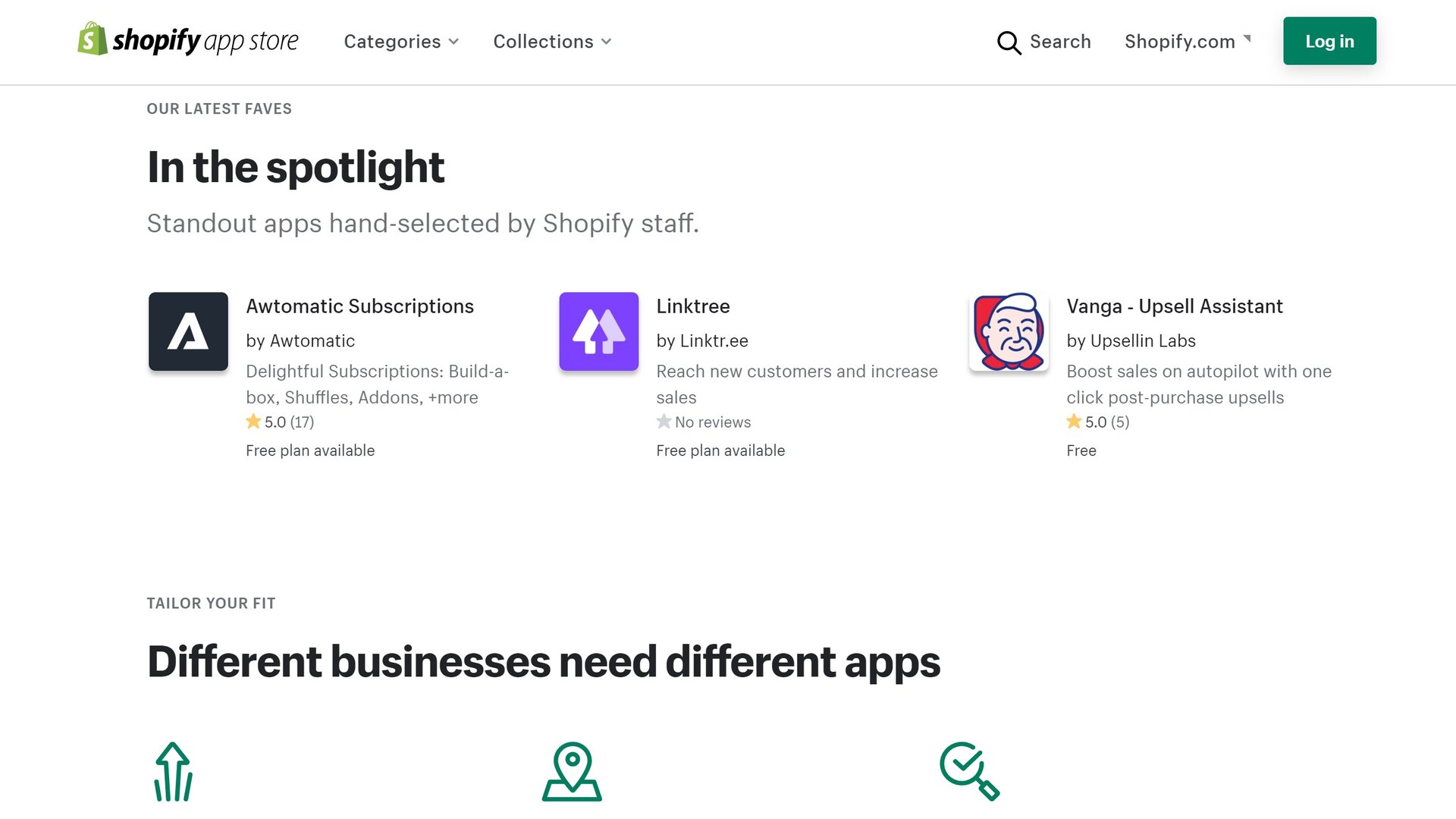
Both Shopify and BigCommerce offer extensive app marketplaces for adding more tools and features to your online store. The Shopify App Store has more than 4,200 apps, while the BigCommerce Apps Marketplace has more than 800. In both stores, you’ll find free and paid apps.
The app marketplaces are important because they offer a huge variety of ways to scale your business and customise the platforms. For example, apps on both platforms offer shipping and logistics services, advanced marketing and merchandising tools, and accounting features.
There are also apps to customise your checkout experience, build mobile apps, and integrate physical stores into your online sales.
Which platform is best for me?
Shopify and BigCommerce compete closely for the attention of online business owners, and the two platforms have a lot in common. Both offer unlimited products, advanced selling tools, and app marketplaces to help your business scale.
That said, Shopify is slightly better suited for businesses that are scaling up quickly. That’s because it offers a wider range of apps, built-in marketing tools, and more flexible sales reporting. While you can certainly add marketing and analytics tools in BigCommerce through its app marketplace, having these features baked in from the start can make a big difference for your business.
BigCommerce is somewhat better suited for online businesses that have a lot of staff, or that want to use a payment process other than Shopify Payments. The fact that all BigCommerce plans come with unlimited staff accounts and zero transaction fees, regardless of what payment processor you use, is a big advantage for this platform.
Shopify vs BigCommerce: main features compared
| Header Cell - Column 0 | Shopify | BigCommerce |
|---|---|---|
| UI and setup | Straightforward, with setup checklist | Slightly more crowded dashboard with setup checklist |
| Pricing | £19 to £259 a month | £24.55 to £245.83 a month |
| Templates and site design | 100+ templates, limited flexibility | 180+ templates, drag-and-drop editor |
| Sales channels | Google Shopping, Facebook, Pinterest, eBay, Walmart, Amazon, POS | Walmart, Facebook, Amazon, eBay, Wish, and Mercado Libre, Clover POS, Instagram, Pinterest |
| Marketing campaigns | Integrated email, text, and online ad campaigns | Requires third-party apps |
| Sales analytics | Custom and marketing-driven reports | Merchandising and in-store search reports |
| App marketplaces | 4,200+ apps | 800+ apps |
What our reviewers said
Shopify
“There’s a reason why Shopify is the world’s most popular ecommerce platform. It’s beginner friendly, easy to use, and has excellent online selling tools. In addition, it comes with a 14-day free trial, a selection of online store templates, and streamlined store management features."
- Score: 4.5/5
BigCommerce
“This builder is right up there with the best online store creators in the world. It’s a little more complicated than competitors like Shopify, but it’s great for those looking for a scalable solution with great design flexibility. Noteworthy features include a small but decent app library, a suite of SEO tools, zero transaction fees, an advanced mobile management app, and a suite of third-party marketplace integrations.”
- Score: 4.5/5
Alternatives to Shopify and BigCommerce
If Shopify and BigCommerce aren’t quite what you’re looking for, there are plenty of alternatives available.
One of the best is Squarespace, which combines moderately advanced ecommerce features with best-in-class website design features. Squarespace offers beautifully-designed templates, and a site editor that’s much more flexible than what either Shopify or BigCommerce offers.
You won’t have the ability to integrate multiple sales channels, but Shopify does include email marketing tools and a handful of extensions for managing your business. Squarespace ecommerce plans start at £24 a month.
Another option worth considering is WooCommerce, an ecommerce platform built specifically for WordPress websites. WordPress offers virtually unlimited flexibility when it comes to designing your online storefront, but it’s not as easy to use as Shopify and BigCommerce are.
WooCommerce is free, but the cost of running an online store can add up quickly since you’ll need to purchase a lot of third-party apps.
Further reading on website builders and web hosting
If you want to learn more about website builders, check out our guides to the best small business website builders and the best ecommerce website builders. We’ve also reviewed the best free website builders for individuals and small businesses on a tight budget, and profiled the best web hosting services in case you're looking for an alternative route to websites.
Get the ITPro daily newsletter
Sign up today and you will receive a free copy of our Future Focus 2025 report - the leading guidance on AI, cybersecurity and other IT challenges as per 700+ senior executives
Michael is a prolific author in business and B2B tech, whose articles can be found on Business Insider, Entrepreneur, TechRadar Pro, IT Pro Portal, Tom's Guide, and more, covering everything from international tech regulations to corporate finance and emerging tech brands and markets. A successful copywriter and entrepreneur, Michael has worked with dozens of SaaS and tech companies, and has his finger firmly on the pulse of B2B tech, finance and business.
-
 Global cybersecurity spending is set to rise 12% in 2025 – here are the industries ramping up investment
Global cybersecurity spending is set to rise 12% in 2025 – here are the industries ramping up investmentNews Global cybersecurity spending is expected to surge this year, fueled by escalating state-sponsored threats and the rise of generative AI, according to new analysis from IDC.
By Ross Kelly Published
-
 Google Cloud is leaning on all its strengths to support enterprise AI
Google Cloud is leaning on all its strengths to support enterprise AIAnalysis Google Cloud made a big statement at its annual conference last week, staking its claim as the go-to provider for enterprise AI adoption.
By Rory Bathgate Published